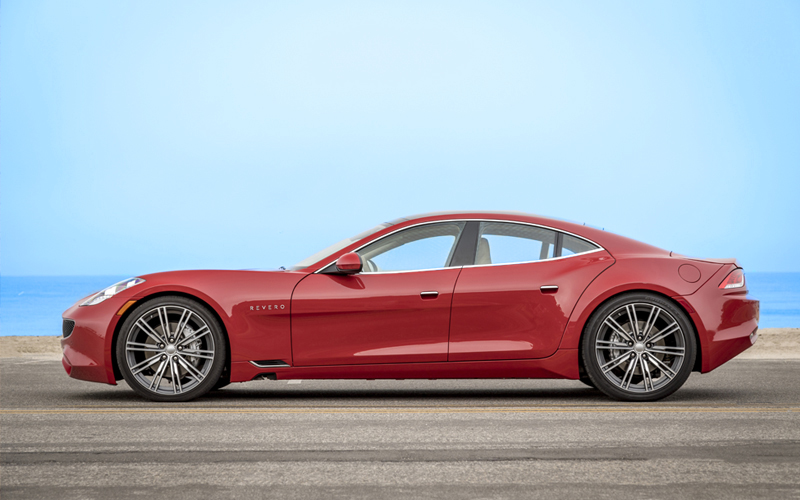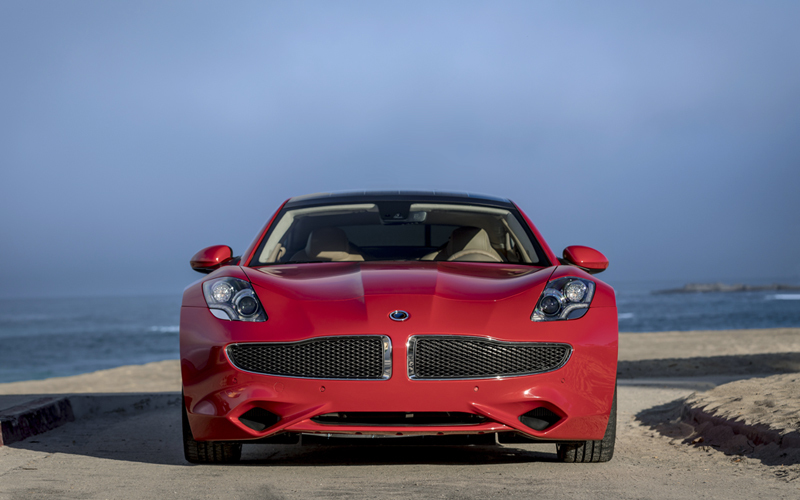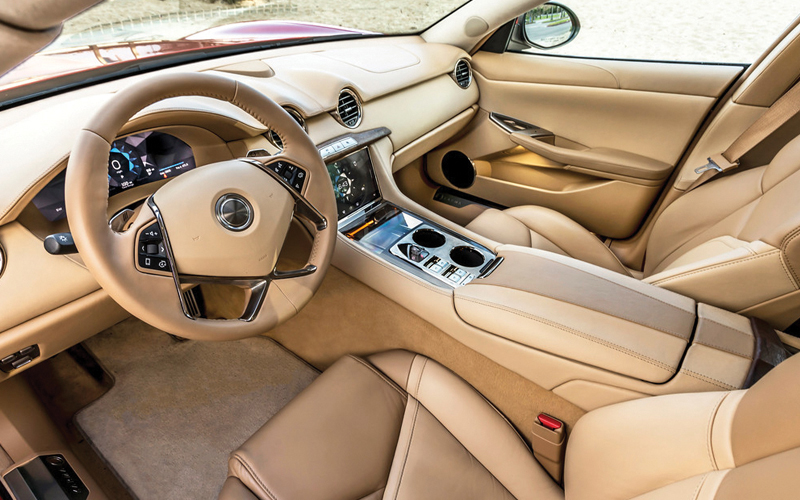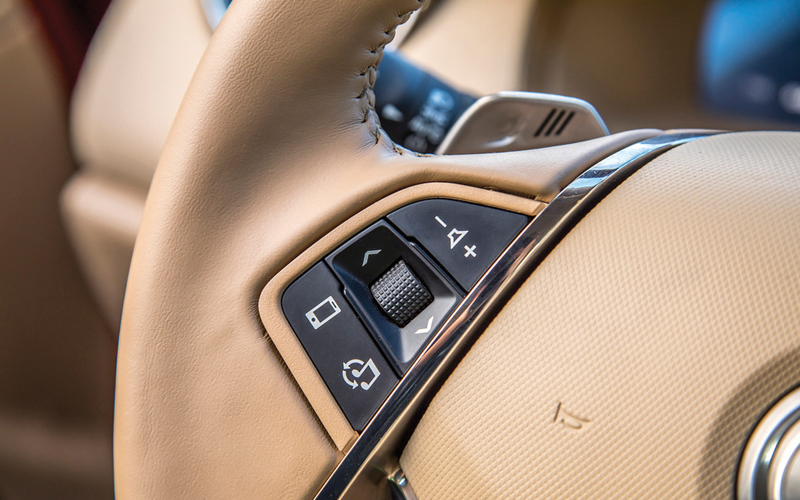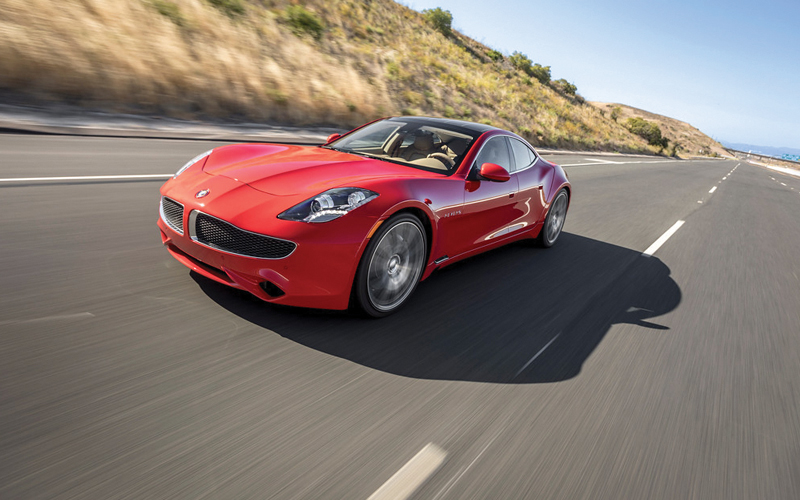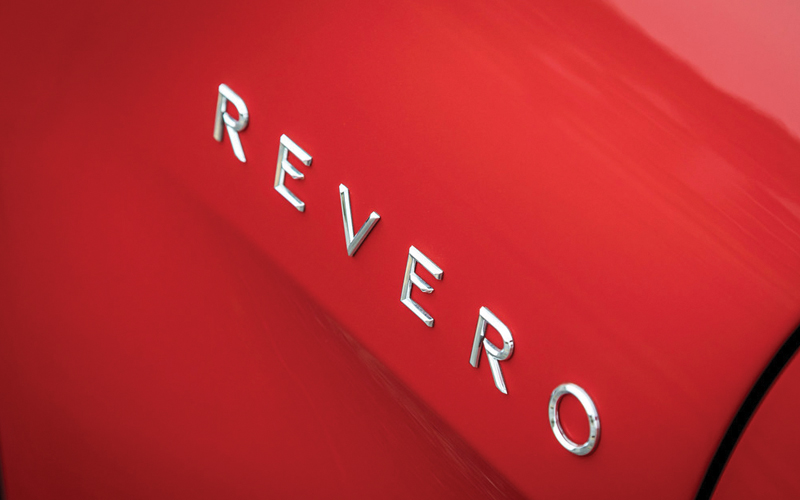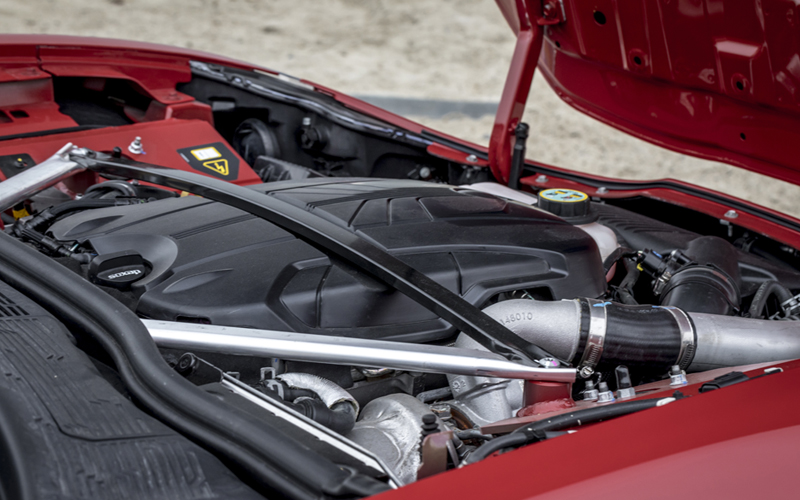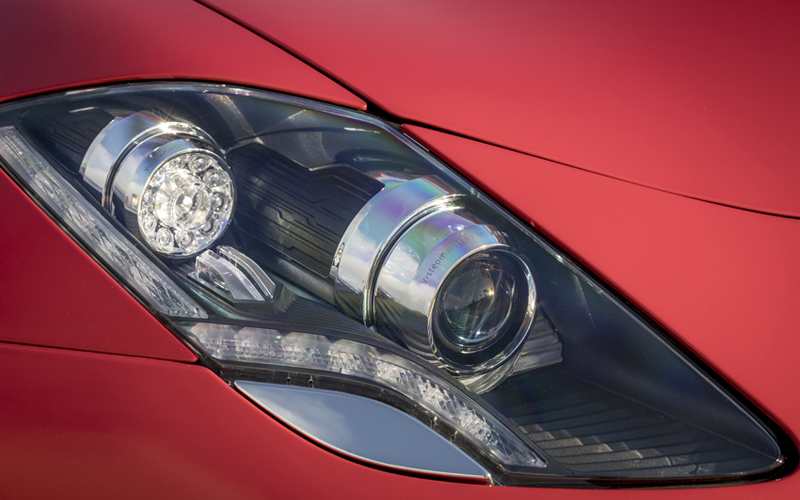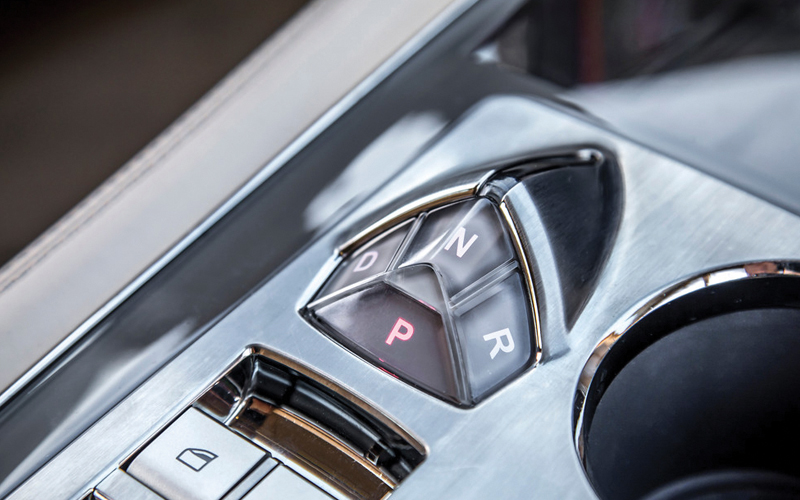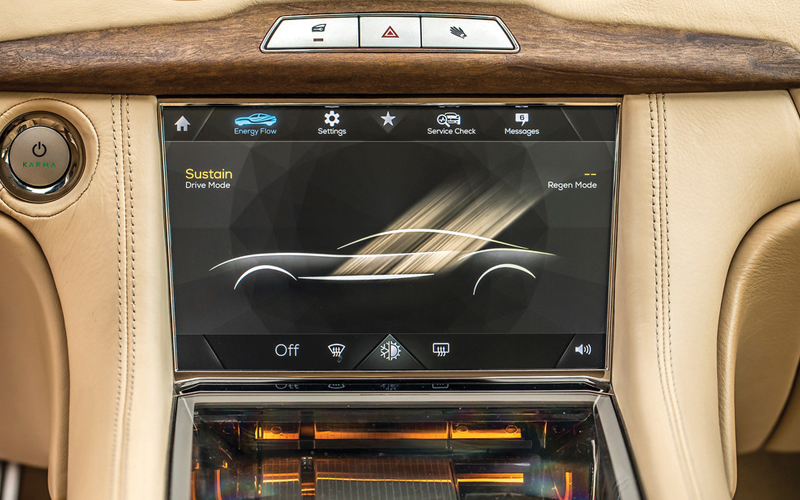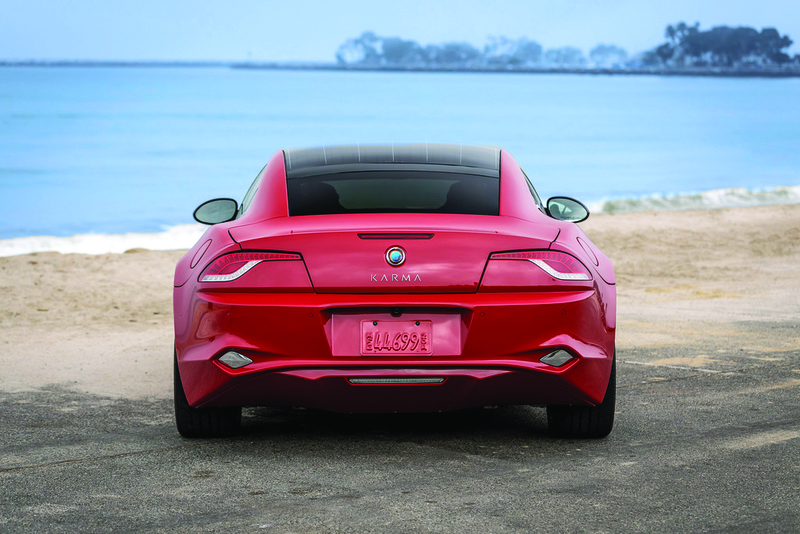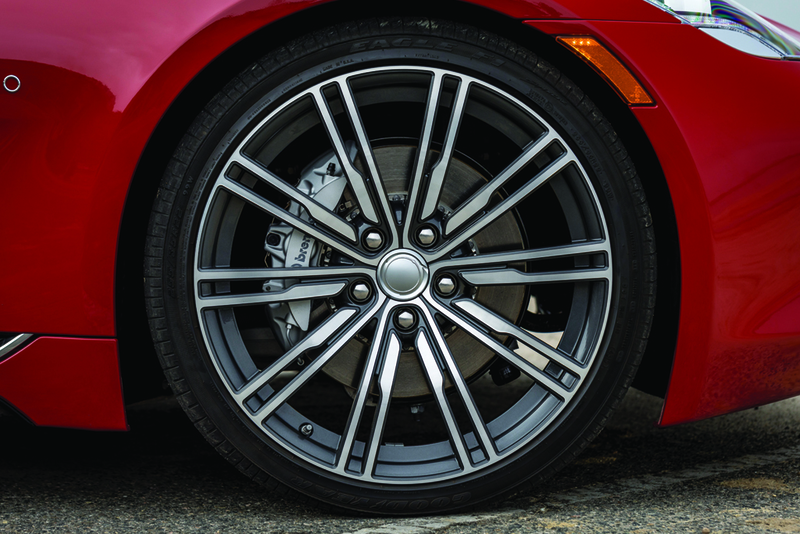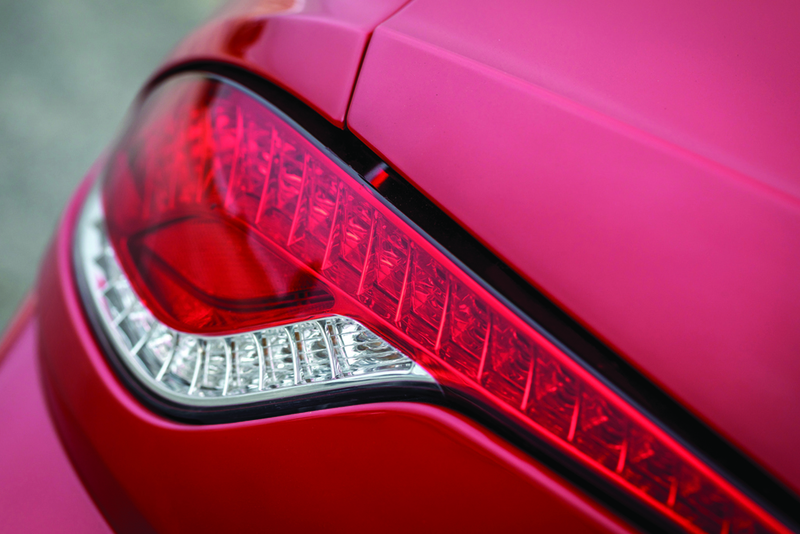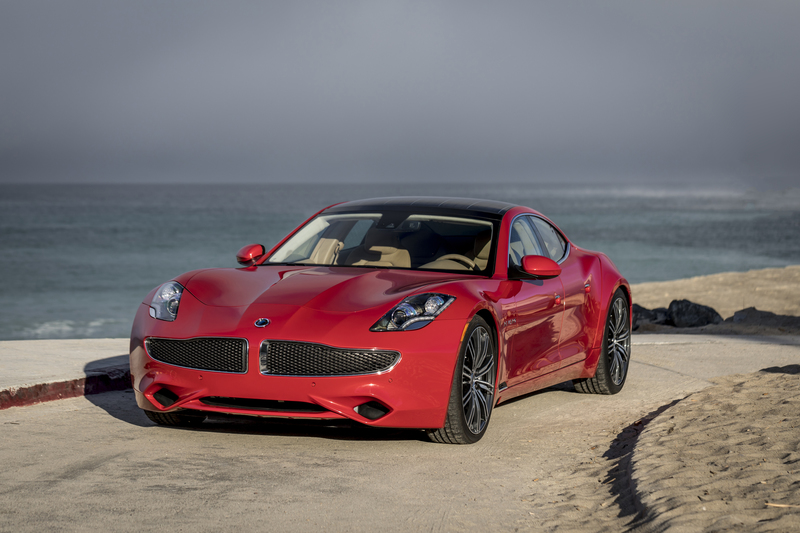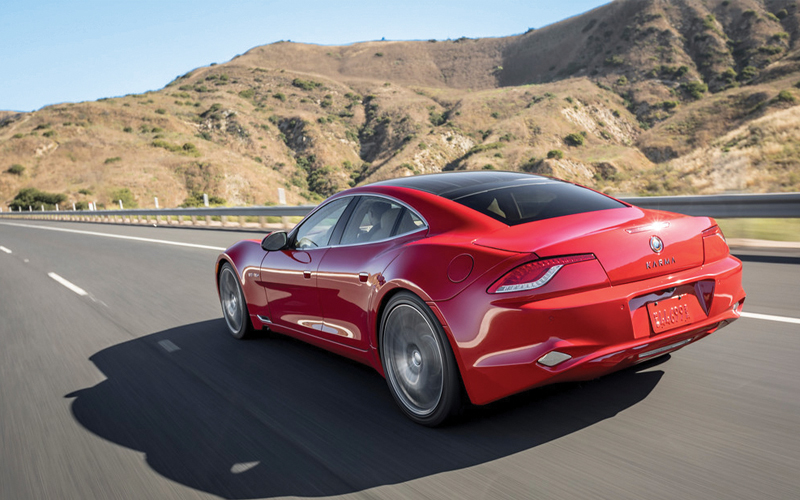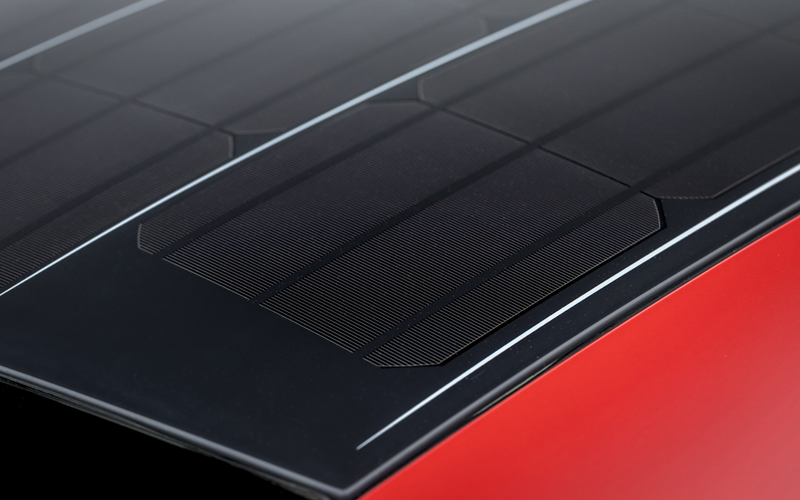On one of the most unspectacular stretches of Southern California, among a characterless oblivion of corporate parks and family restaurants in a corner of Orange County, we drive the Karma Revero. It is in this most mundane environment that the Karma slices like a high-wattage beacon. Pretty much everywhere, but especially here, this car stands alone: it is a spaceship in a Walmart parking lot, a shooting star visible at dawn. You best not be a wallflower if you ever hope to be an owner — the neck craning that follows the sleek sedan down a bustling boulevard is not unlike what you’d experience behind the wheel of an Italian supercar. The Revero obliterates anonymity.
We turn a corner and aim the long, low hood down a small side street, empty of any other vehicles. And the hood is long, like a 1970s Corvette — just one of the memorable aspects of driving a Karma. The interior is a womb of leather, like being in a Gucci saddle shop, ensconced in buttery hide. The steering wheel feels substantial in your hands, meaty, like you’re navigating a great ship. And the composure of the car is superb; the architecture feels tight. You can thank this rigidity in part to the Karma’s battery pack and aluminum central tunnel, which help make it one of the most torsionally rigid cars on the planet.
But you don’t really know you’re driving a Karma until you find yourself on an empty street like this and pull on the left paddle, shifting the vehicle from Sustain into Sport mode [see sidebar]. Prepare to unleash all 403 horses to the rear wheels. Deactivate the Revero’s ESC traction control system, and you’re alerting the car it’s time to play.
From a full stop I stomp on the throttle. The Revero’s twin electric motors dump their full avalanche of torque (all 983 lb-ft) onto the rear wheels, and the car slingshots down the street while my head collides against the headrest.
The eeriest part? The quiet. The stunning silence, like watching a Michael Bay climax scene on mute. Usually when you unleash this amount of torque — actually, that is a fallacy; almost no automobile boasts this ludicrous amount of torque — the sledgehammer force is combined with the sound of a dozen cylinders exploding in furious unison. Rabid combustions that fill your ears with the glorious wail of an internal combustion engine at full bore. But not in the Revero. Here in this leather womb it is quiet. Serene. In fact, it is so quiet it is unsettling — especially as your body hurtles through space with such force. About midway up the quarter mile straight you hear a whoosh! as the turbocharger releases its trapped air.
In dizzying moments like this one can see why a gargantuan Chinese auto parts conglomerate is investing nearly $3-billion to resurrect this car — including building a 550,000-square-foot factory in Moreno Valley, California. The Revero is that worthy of the dark arts.
There are spectacular explosions in industry. Flames of commerce that burn hot and bright and consume a company to ashes. But on very rare occasions, a new bird can arise from those red embers, and manifest stronger and greater than its predecessor ever was. In this case, the Phoenix is Karma Automotive (karmaautomotive.com).
The Karma Revero is based on the Fisker Karma, a gorgeous serial hybrid sedan that set hearts aflame and, unfortunately, cars aflame as well. Founded in 2007 by renowned designer Henrik Fisker (credited with designing gems such as the BMW Z8 and Aston Martin DB9 and V8 Vantage), the Karma gamed fame as Fisker Automotive snapped up high-level execs from established brands and raised substantial capital. It may seem crazy now, but there were many in the industry who expected Fisker to succeed over a nascent Tesla brand that featured no range extending option.
But as can be expected of a start-up automotive brand, Fisker had its issues — at worst a series of cars that spontaneously combusted to great media attention. When Hurricane Sandy hit New York City in 2012, the storm flooded the port and wiped out an entire European shipment of 338 Karmas, all but destroying Fisker and spiraling the brand into insolvency after manufacturing only 2,500 vehicles. But because its product was so unique, its styling so evocative and the technology so promising, rights to the company were snapped up by the Wanxiang Group for $149.2 million.
At bankruptcy, the Fisker Karma was reportedly burdened by some 300 identifiable defects. But critical Karma Automotive engineers diagnosed almost 600, and set to address all of them before the nameplate changed over from Fisker. The biggest improvements were done to the entire electrical control system, which has been thoroughly upgraded and integrated with the rest of the vehicle’s control systems. The batteries — supplied by A123, another Wanxiang subsidiary — have also enhanced their next-generation chemistry. This sort of symbiosis underscores the value of Karma to its parent company, further filling out their vertical monopoly: the more Reveros they sell, the more battery packs A123 produces.
“Overall, it’s much more efficient, much greater power,” Chief Revenue Officer James Taylor tells us. “It’s largely the reason why our vehicle is faster than the old vehicle.”
So, in a way Karma is to Fisker what Saline is to Mustang or Callaway is to Corvette, taking a slightly flawed vehicle and addressing its shortcomings, sanding down the rough patches and tightening all the loose bolts. The Revero has all the visual fireworks of a Fisker, with a greatly improved electric powertrain (e.g. new battery chemistry, new software, new electronics, etc.), a new manufacturing process, a brushed-up interior, a fitter finish and a far superior UI and infotainment system. It’s quite likely that many Fisker buyers will be early adopters to Reveros, wanting to update their rides while keeping its neck-craning appeal.
“One of our advantages as opposed to a new start-up company: start-ups don’t have a customer base. You have no field data, you don’t know what worked and what didn’t,” notes Taylor. “We came in with kind of a running start, as we knew what already worked on the prior vehicle: what was well-received by journalists, awards, as well as the customers. And we knew what didn’t.”
Like the sheet metal, the Revero’s interior is mostly all carried over from the Fisker days. Which isn’t a bad thing, as the Karma has always boasted a simple but elegant cabin. However, a lot of work has been put into tightening gaps, making dimensional quality more consistent, and improving overall fit and finish. “A lot of people who used to drive the old Fisker found that this one just feels tighter,” notes Vice President of Global Design Alex Klatt. “Most of the work on the car has been done on fit and finish refinement, lots of stuff that you don’t see.”
Let’s start with the supple brown calf leather, a buttery material that seems to cover nearly every square centimeter of the cabin, replacing much of the fake suede from the car’s previous iteration. Sourced from Scotland’s esteemed Bridge of Weir craftsmen, the leather is culled from some of the best-treated cows on Earth. They grow up on a highly eco-sensitive farm, their waste powering the plant next door. It’s one of the most energy-efficient tanneries in the world.
Other noteworthy highlights include the sustainable wood trim — a single wave of open pore elegance cleverly sourced from a walnut farm whose trees were scorched in a forest fire. The steering wheel is also swathed in matching leather and features the brand’s round disc logo in the center. On the hood, that same disc can be found in iridescent blue hand-painted by artist Dennis Mathewson — each badge unique and imported from Hawaii. Along the doorsills aluminum plates can be found with “KARMA” embossed in sharp linear font. Just like the Fisker, the Revero’s cabin is defined by the giant transmission tunnel running through the middle. Of course, that’s not going anywhere, it is integral to the powertrain. But if you peek between the cupholders and center display you will see a small window that reveals the battery pack (it’s a fake battery — a real one would burn too hot).
The Karma’s most important cabin upgrade comes in the form of the display screen dominating the center point of the dash. Although the size is the same, the quality of the picture is now sharper with crisper definition. Even more important is what’s behind the screen: Karma engineers have programmed millions of lines of code to improve the user experience. Interestingly enough, they didn’t outsource this technology but developed it themselves in order to exercise greater control over how easy and intuitive the system is to use. “The idea we wanted is that if somebody had to read the owner’s manual for the infotainment system, we failed,” says Taylor. “Just simple and easy.”
As upgraded as the interior is, the focus of the Revero is not to be a luxury car, or a sports car — it is, in spirit, a true Grand Tourer in every sense of the term. Yes, it’s a four-door, but the Karma is a sleek testament to the classic GT coupé in shape and performance. It is simultaneously both fearlessly futuristic and yet bracingly classic — without question one of the most beautiful machines of the 21st century. It’s safe to say that if its design were not so utterly sublime, Wanxiang’s shrewd CEO Lu Guanqiu would not have invested billions in resurrecting it from the grave. But like the indomitable Phoenix, this electric bird flies again… and luxury buyers looking to upgrade their zero emission rides are luckier for it.

